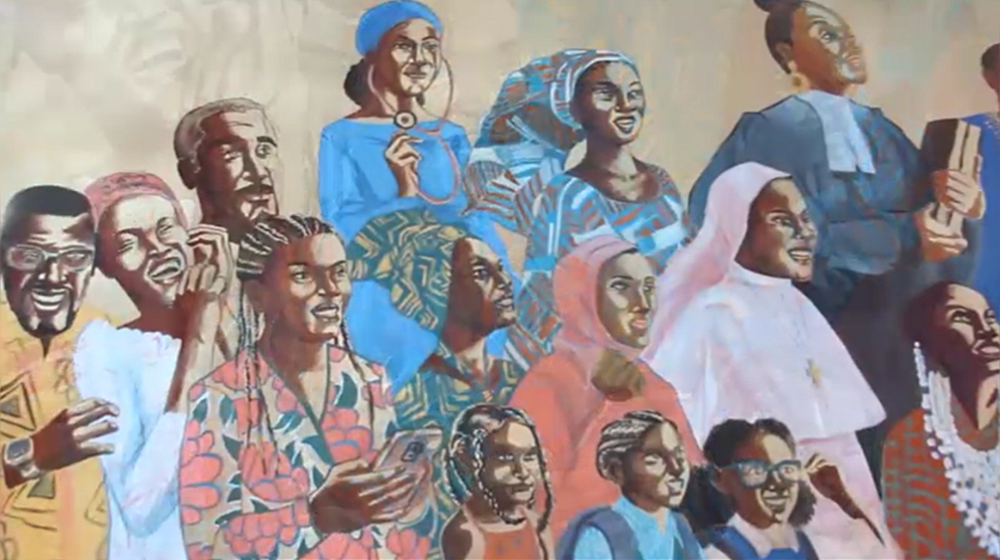News
Coming together to change social norms and stand against female genital mutilation in Ethiopia
- 09 September 2022
News
BETITI, Ethiopia – “We asked around and found the woman who cuts girls in the village,” said 19-year-old Bereket Merihun. “She strongly warned us to keep it a secret.”
Childhood and adolescence can be a time fraught with peer pressure and insecurity, when many young people go to great lengths to fit in.
For Ms. Merihun, a desire to be like her peers led her and four friends to make a pact when they were just 15 years old: To undergo female genital mutilation during their school summer break.
Ms. Merihun hid her decision from her parents. While her mother believed young women should be cut, her father firmly opposed the practice.
Promising not to say a word to anyone, Ms. Merihun and her friends made an appointment with the practitioner. Soon after, she was watching her friend – gagged so she wouldn’t cry out in pain – be cut at an isolated farm. Ms. Merihun’s turn was next.
“I was second in line. I was scared when I saw my friend getting cut,” she recalled. “I was terrified.”
But just before she was called for her turn, her father suddenly appeared and brought the procedure to a halt. He had been regularly attending community discussions held to raise awareness about the dangers of female genital mutilation – it often leads to physical and psychological ills, and can even be deadly – and discovered at church that the practice is unsupported by the Bible.
As he and the young women left, he warned the practitioner he would report her to the police if she continued her crimes.
Engaging communities and transforming traditions
Female genital mutilation has been outlawed in Ethiopia since 2004, but many pursue and perpetuate the practice anyway, considering it a duty and rite of passage. Recent reports show that nearly two-thirds of women and girls aged 15-49 in the country have undergone some form of female genital mutilation.
With women and girls often earning social approval for being subjected to genital mutilation, it can be difficult for communities – and even women and girls themselves – to discontinue the practice, despite its harmful consequences. The procedure can result in severe bleeding and deadly infection, or lead to long-term issues related to childbirth, sexual dysfunction, increased risk of HIV transmission and incontinence.
Some families view cutting as a prerequisite for marriage, while one in four women in Ethiopia who are aware of female genital mutilation happening believe it’s required by their religion.
These attitudes are starting to shift, however, helping to reduce the prevalence of the practice from 74 per cent in 2005 to 65 per cent in 2016. But recognizing and changing social norms requires building broader social movements that unite both women and girls and men and boys behind the cause of abandoning female genital mutilation.
To this end, UNFPA is engaging faith-based organizations, community institutions and government stakeholders across nine districts of the Sidama region in the fight against the harmful practice and supporting community conversations like the ones Ms. Merhiun’s father attended.
Since 2008, UNFPA in partnership with UNICEF has led a Joint Programme aimed at eliminating female genital mutilation across 17 countries, including Ethiopia. In 2021, the programme helped more than half a million girls and women to access comprehensive prevention and response services.

Engaging men and boys
While the practice is most commonly performed by women, the beliefs underpinning female genital mutilation are often rooted in gender inequality and harmful gender norms.
Many people believe that uncut girls are dirty. Others believe female genital mutilation is neccessary to curb women’s capacity for desire or pleasure. In other words, girls’ bodies are altered, and their health and lives risked, to accommodate the perceived preferences of men and boys.
It is therefore important to engage not only women and girls in the effort to eliminate female genital mutilation, but also men and boys.
Ms. Merihun’s father is one of the men in their region who took messages about the harms of this practice to heart. He pledged to help end the cycle – and by rescuing his underage daughter from an illegal mutilation, has already put this promise into practice.
When they returned home that fateful day, he explained what he had learned about female genital mutilation, both the lessons he got from their church and from community dialogues. Ms. Merihun began investigating the negative impacts of female cutting by talking with her fellow students. Today, she no longer feels like an outcast for being intact.
Instead, she feels confident and appreciates herself the way she is. ''Some people try to tease and embarrass me, pointing fingers and saying, 'She is uncircumcised’,” Ms. Merihun said with a defiant smile. “But I don't care."